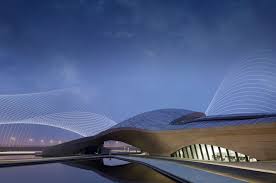Sustainable construction practices are gaining momentum across the globe, and the Middle East is no exception. As the vicinity grapples with extreme environmental challenges—ranging from scorching temperatures to restrained water resources—the want for sustainable improvement turns increasingly more urgent. Sustainable construction is now not the handiest pursuit to reduce the ecological footprint of construction however also complements the high-quality of lifestyles residents by fostering healthier environments.
Historical Context and Current Trends
Traditionally, Middle Eastern structures have been shaped by weather, subculture, and available materials. The ancient use of mud bricks and herbal ventilation techniques exemplifies a deep-rooted expertise in sustainability. However, with speedy urbanization and modernization, a lot of these practices have been overshadowed by using conventional strategies.
Recently, a significant shift toward sustainability has been evident in several initiatives at some point in the area. Architects and developers are increasingly specializing in innovative designs that combine traditional elements with current sustainability standards. This approach no longer simply honors the vicinity’s heritage however additionally paves the way for environmentally accountable architecture.
Innovative Building Materials
The desire to construct materials is vital in sustainable production. In the Middle East, eco-friendly options are gaining traction. For example, materials like Galvanized Steel Sheets have become famous because of their sturdiness and recyclability. Additionally, modern alternatives including recycled plastics and bamboo are rising, imparting both sustainability and aesthetic appeal.
Local stone is likewise being embraced, not only for its splendor but for its low carbon footprint. The use of nearby materials reduces transportation emissions and supports nearby economies, making it a win-win for both builders and groups.
The Role of Architects and Design Firms
Leading architects and layout companies are at the leading edge of the sustainable construction motion within the Middle East. They are redefining the architectural panorama by way of creating designs that harmonize with the herbal environment. Many of those professionals, including some of the Top Interior Designers in Oman, are committed to incorporating sustainable practices into their projects, whether through electricity-green designs or using sustainable materials.
Cultural background performs a good sized function in shaping the current sustainable structure. By integrating conventional design elements, architects aren’t handiest keeping the area’s identity but also promoting environmentally responsible practices.
Government Policies and Initiatives
Governments within the Middle East are spotting the significance of sustainable development and are implementing rules to guide it. Initiatives just like the Dubai Clean Energy Strategy and Saudi Arabia’s Vision 2030 are using funding in sustainable projects.
These regulations encourage collaboration between public and personal sectors, main to the introduction of innovative projects that prioritize sustainability. Notable authorities-led tendencies have efficaciously showcased how sustainability may be woven into the material of urban making plans.
Renewable Energy Integration
Integrating renewable energy sources into constructing designs is a cornerstone of sustainable architecture. Solar panels, wind turbines, and geothermal electricity systems have become common in new buildings. The Middle East, with its plentiful sunlight and wind resources, is uniquely placed to capitalize on this technology.
For example, several homes inside the location were designed to be energy-neutral, generating extra power than they devour. These pioneering initiatives function as models for future developments, demonstrating the viability of renewable power in city environments.
Community Engagement and Education
The success of sustainable building initiatives hinges on network engagement. Local communities should be involved in the planning and execution of initiatives to ensure their needs and choices are met.
Educational packages aimed toward raising awareness about sustainability in production are also important. Workshops, seminars, and collaborations with universities can equip the following generation of architects and developers with the knowledge and tools to innovate sustainably.
Challenges and Solutions
Despite the progress made, several demanding situations continue to be in promoting sustainable construction practices within the Middle East. High initial fees, regulatory hurdles, and a lack of awareness can avert progress.
However, revolutionary answers from around the world may be tailored to satisfy neighborhood needs. For instance, incentivizing inexperienced building practices via tax breaks or grants can encourage builders to put money into sustainability. By sharing nice practices and success tales, the vicinity can triumph over those demanding situations and foster a lifestyle of sustainability.
The Future Outlook
Looking ahead, the destiny of sustainable building in the Middle East seems promising. The place is poised to emerge as a frontrunner in sustainable structure, with trends including smart towns and zero-electricity homes gaining traction.
As generation continues to strengthen, we can count on looking for even more revolutionary designs that prioritize sustainability. From clever home systems that optimize electricity utilization to buildings that contain vertical gardens, the possibilities are countless.
Conclusion
The destiny of sustainable construction within the Middle East is brilliant, with numerous projects and innovations paving the way for a greater green construction panorama. By embracing sustainable practices, the location cannot handiest mitigate environmental challenges but also enhance the satisfaction of life for its citizens.
As stakeholders—ranging from government bodies to architects and nearby groups—come collectively to recommend sustainable improvement, the Middle East can turn out to be a version for other areas. The time to behave is now, and the dedication to sustainable construction will certainly shape the destiny of this colorful location for generations to come.










